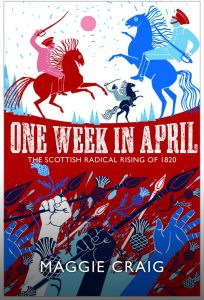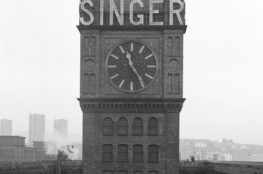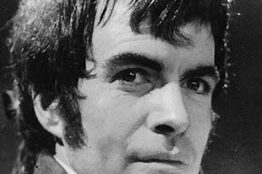‘Did ye ever see sic a crowd, Tammas?’
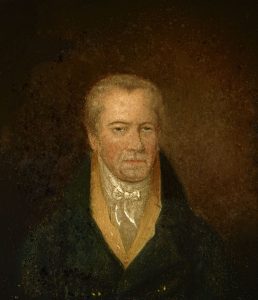
James Wilson, a weaver from Strathaven, a man who had harmed nobody, was put to death on Glasgow Green on Wednesday 30 August 1820 for his short-lived participation in the Scottish Radical Rising of that year. As the Glasgow Herald reported, it was a fine summer’s day and a large crowd gathered to witness the hanging and subsequent beheading. The gallows were set up just across from the High Court where Purlie Wilson had been tried and found guilty of high treason. He had acquired his nickname because of his adaptation of the purl stitch to make the knee-length knitted stockings of the time easier and quicker to weave. In April 1820 he was one of the men who marched out of Strathaven under a flag which bore the legend ‘Scotland Free or Scotland a Desart’ [sic]. This was an accepted alternative spelling of the word at the time.
James Wilson said his farewells to his family the day before his execution, telling his grandson he had no parting gift for him except his tobacco pouch. Wilson said he hoped John would keep this homely object for the sake of his unfortunate grandfather. After a pause, he added a few poignant words. ‘I hope that my countrymen will at least do my memory justice.’
Shortly after two o’clock on Wednesday 30 August, Glasgow’s Lord Provost, magistrates and sheriff took their places on the bench of the court room where Wilson had been tried. He followed them in, walking with ‘a firm step and an undaunted countenance’ to the chair that had been placed for him in front of the magistrates’ bench. He was dressed in white, his clothes trimmed with black. This was the prison uniform. He’d been offered the choice to be hanged wearing his own coat but declined, declaring this to be the waste of a good coat. Definitely a weaver’s point of view.
James Wilson’s behaviour in his final days and hours was, the newspaper wrote, ‘very decent.’ At the religious service which preceded his execution, he was observed to be more composed than many others in the court room. The condemned man was offered and drank a glass of wine. Once the religious service was over, the public benches were cleared before Wilson was escorted outside, where his executioner was waiting for him, his face shielded by a mask. In his right hand the headsman held a large axe, in his left a knife.
He and Wilson were drawn together by horses to the scaffold in a hurdle, usually a cart without wheels which had to be dragged along. This had been usual at public hangings for centuries. Being dragged to your death served to underline the humiliation of what you were about to undergo. The tension must have been mounting to an almost unbearable level. Yet Purlie Wilson showed no fear. He addressed a comment to the man carrying the axe and the knife. ‘Did ye ever see sic a crowd, Tammas?’ For there were thousands of people waiting there on this lovely late August afternoon to see him die.
The executioner was Thomas Young and he was 20 years old. Since James Wilson addressed him by an affectionate Scottish diminutive of his first name, he must have previously been introduced to him. It was traditional for hangmen and the man who struck the blow to ask forgiveness from the man whose life they were about to end. It was a long time since anyone in Scotland had been beheaded. Young may have been a medical student who’d been asked to do the job because of his knowledge of the human body.
James Wilson mounted the scaffold a few minutes before three o’clock. The noose was placed around his neck, a black hood put over his head and a cambric handkerchief put into his hand. This was for him to drop as a signal that he was ready, composed before he met his death. As he held the square of white cloth, the crowd began to hiss and call out. ‘Murder,’ they cried. ‘He is a murdered man!’
James Wilson gave the signal and the trap door beneath his feet fell open. The Glasgow Herald might have called his execution ‘this horrid business’ but it supplied a comprehensive word picture of exactly what happened, including the observation that ‘upon the whole he appeared to die very easily.’ After hanging for half an hour, the body was lowered onto spokes above the mouth of his coffin and his head laid on the block. The young headsman appeared calm as he severed the head from the body. He then held the head up, calling out, ‘This is the head of a traitor.’ The crowd disagreed. ‘It is false,’ they called back in impassioned and sorrowful response, ‘he has bled for his country.’
Purlie Wilson was buried in common ground at Glasgow Cathedral. That night his daughter and his niece exhumed his body, possibly with the connivance of those who were supposed to be guarding the grave. He had expressed a wish to be ‘buried in the dust of his fathers.’ The two women lifted the coffin up onto the wall of the burial ground. On the other side of that a farmer local to Strathaven was waiting with a horse and cart. James Wilson’s body was brought home and buried in the graveyard at the back of his house. The house is no longer there but a monument in his memory marks its location, where Strathaven’s Castle Street gives way to North Street.
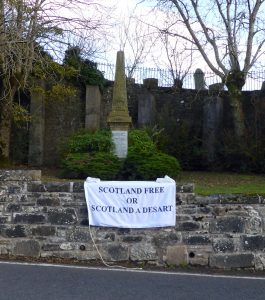
On the morning of the execution, more placards had appeared in Glasgow. ‘May the ghost of butchered Wilson ever haunt the relentless pillows of his jurors. Murder! Murder! Murder!’ An advocate of much-needed political reform all his adult life, it’s seems clear that the powers-that-be had decided to make an example of this well-respected and much-liked man. James Wilson was put to death a few days before his sixtieth birthday.
The foregoing is an abridged extract from One Week in April: The Scottish Radical Rising of 1820 by Maggie Craig, published by Birlinn Books.
